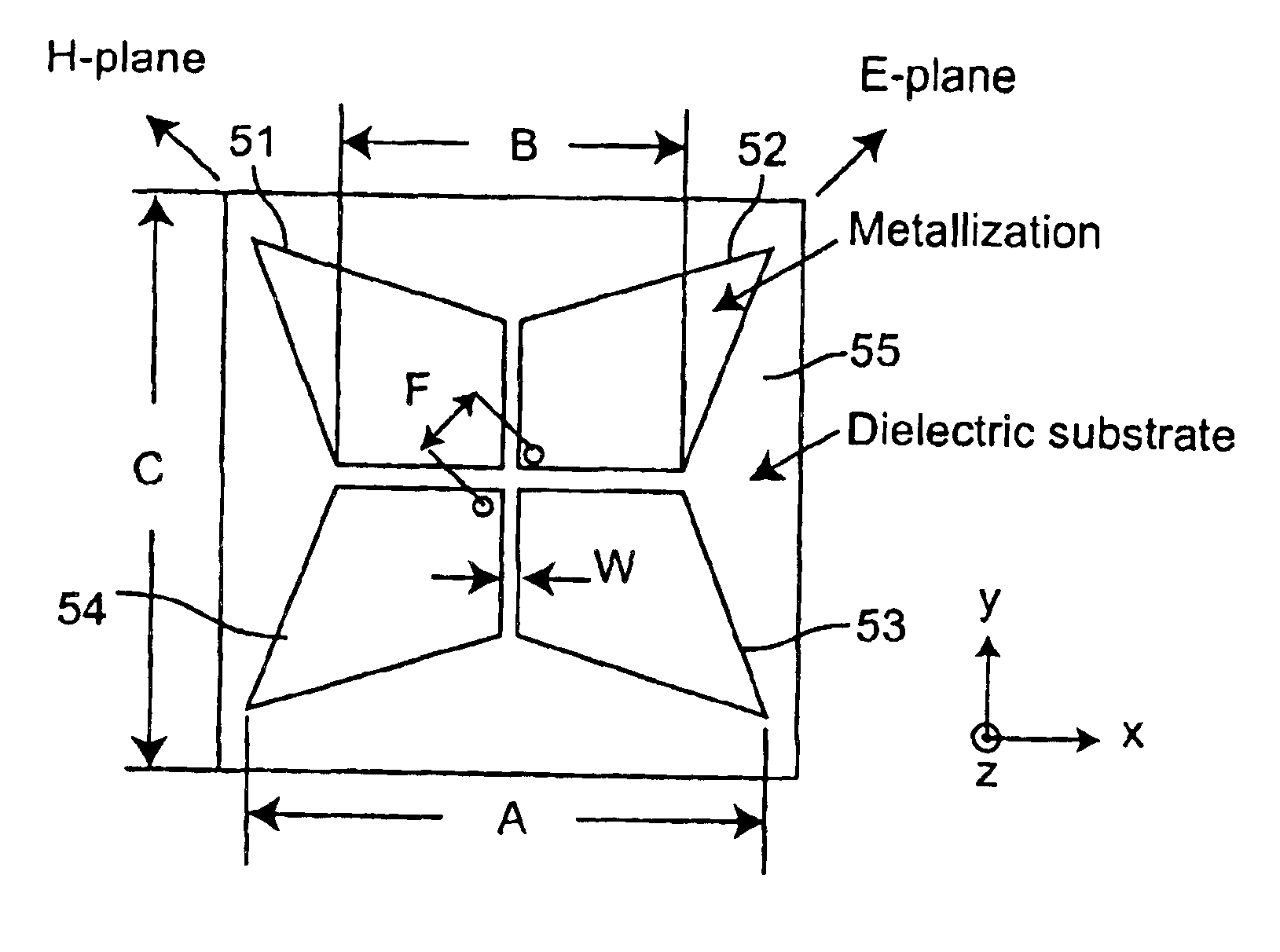Fourpoint antenna
a four-point antenna and antenna technology, applied in the direction of resonant antennas, polarised antenna unit combinations, protective material radiating elements, etc., can solve the problems of narrow impedance bandwidth of wire dipoles and monopoles, pattern degradation at the high end of their impedance bandwidth, radiation patterns of circular disc antennas degraded at the high end of the band, etc., to improve the performance of foursquare antennas without increasing mechanical size, and improve the performance of foursquare antenna
- Summary
- Abstract
- Description
- Claims
- Application Information
AI Technical Summary
Benefits of technology
Problems solved by technology
Method used
Image
Examples
second embodiment
[0085]FIG. 29A is a top view showing a variation of the Foursquare radiating elements according to a further modification of the invention; and
[0086]FIG. 29B is a top view showing a further variation of the Fourpoint radiating elements according to another modification of the second embodiment of the invention.
DETAILED DESCRIPTION OF THE PREFERRED EMBODIMENTS OF THE INVENTION
[0087]Referring now to FIGS. 4A and 4B of the drawings, there is shown the geometries of the antenna according to the first embodiment of the invention. This embodiment is based on the conventional circular disc antenna of FIG. 1 and has similar impedance bandwidth and improved antenna pattern, but has smaller area than the circular disc antenna. FIG. 4A shows a general geometry of the antenna according to the first embodiment of the invention. The antenna comprises a radiating element 21 having a shape of a truncated inverted cone intersecting an elliptical curve. This radiating element is positioned above and ...
first embodiment
[0092]A modification of the present invention is the Crossed Planar Inverted Cone Antenna (Crossed PICA). The idea of crossed planar discs in a monopole configuration was investigated by Taylor in R. M. Taylor, “A broadband Omnidirectional Antenna,” IEEE Antennas and Propagation Society International Symposium Digest (Seattle), Vol. 2, pp. 1294-1297, June 1994 with the goal of improving the antenna radiation pattern. A crossed half disc antenna with dimension A=50.8 mm in FIG. 3 was simulated to determine the level of cross-polarization. Representative computed patterns at 5 GHz in FIGS. 8A and 8B show co-pol and cross-pol components for angles φ=40° and φ=90°.
[0093]Even though the single PICA has excellent co- and cross-polarized antenna patterns, a crossed PICA antenna was examined to see if even lower cross-pol content could be achieved. The geometry of the crossed PICA antenna is shown in FIG. 9. The antenna has two elements 31 and 32 of the same size and shape that are perpendi...
PUM
 Login to View More
Login to View More Abstract
Description
Claims
Application Information
 Login to View More
Login to View More - R&D
- Intellectual Property
- Life Sciences
- Materials
- Tech Scout
- Unparalleled Data Quality
- Higher Quality Content
- 60% Fewer Hallucinations
Browse by: Latest US Patents, China's latest patents, Technical Efficacy Thesaurus, Application Domain, Technology Topic, Popular Technical Reports.
© 2025 PatSnap. All rights reserved.Legal|Privacy policy|Modern Slavery Act Transparency Statement|Sitemap|About US| Contact US: help@patsnap.com



